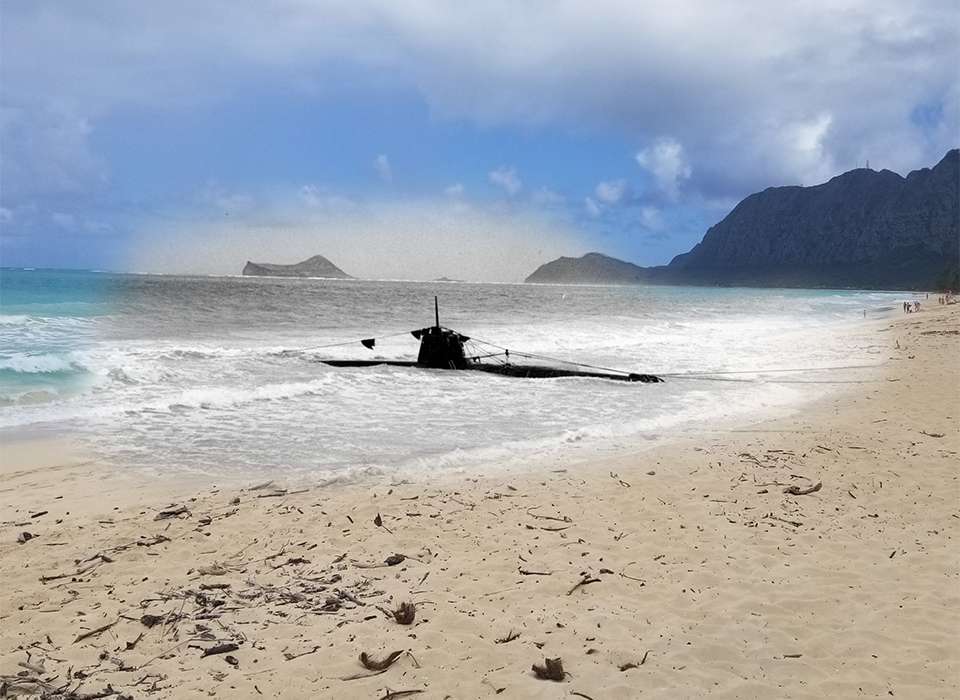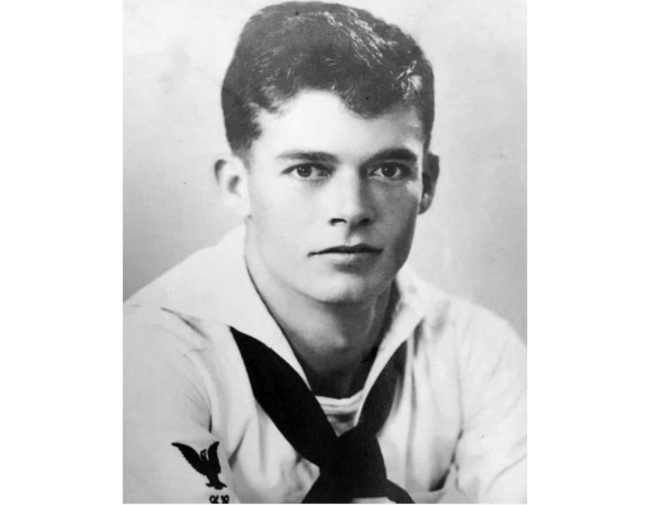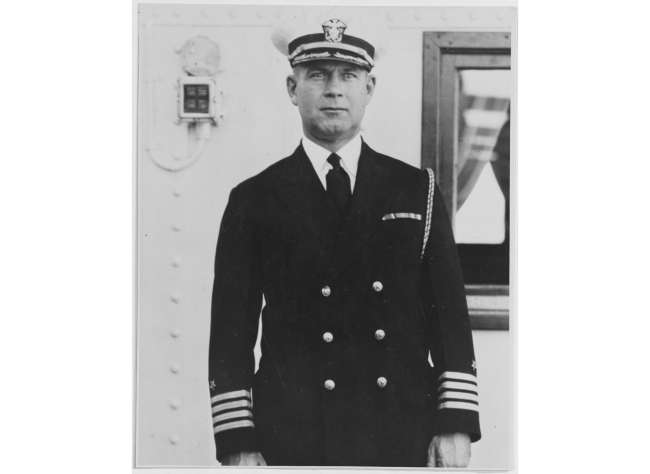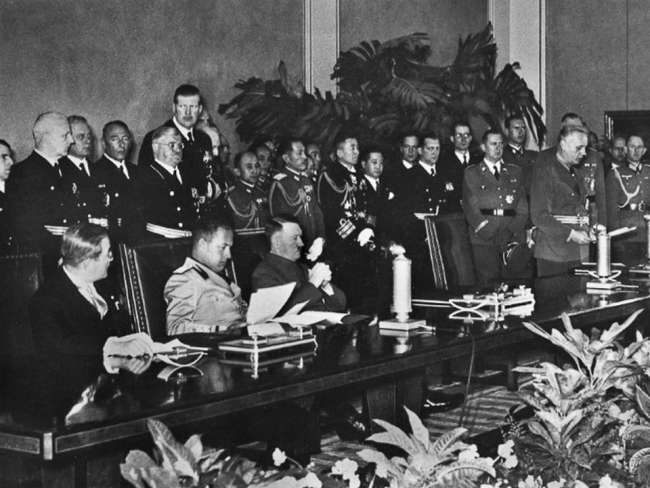Top Image courtesy of Cory Graff and the National Archives. Art by PJ Müller.
It’s hard to be miserable in Hawaii, but I was close. Due to careless planning, high winds, and heavy rains, our hike was most certainly a bust. We were thankfully headed toward the car. Looking up briefly to scan the coastline near Waimānalo Beach, I stopped dead in my tracks. “Oh wow.” I turned to my companions, “Don’t you recognize this spot?”
My friends, who are decidedly not WWII curators, looked at me bewildered. “Huh?”
“This is the spot where that mini-sub came ashore.” They still had no idea. “The Japanese two-man submarine at Pearl Harbor … it got lost. You remember.” They didn’t remember. I spent the next three minutes holding my cell phone up in the driving rain to get a signal to conjure up the wartime photo. I held it up to the horizon for my friends to see, showing the black outline of the hull in the waves, exactly matching up the shape of Rabbit Island and Kāohikaipu Island State Seabird Sanctuary in the background. “It was number 19!” They shrugged. Before hightailing it to shelter, I snapped a photo.
In the dark morning hours of December 7, 1941, Japanese submarine I-24 launched a Type A Kō-hyōteki-class midget submarine off the coast of O’ahu. This sub, along with four others, were tasked with sneaking into Pearl Harbor under the cover of darkness and firing their pair of torpedoes at American ships as the attack began.
The two-man crew of HA-19 had trouble from the start. Their gyrocompass didn’t work. Ensign Kazuo Sakamaki and Chief Warrant Officer Kiyoshi Inagaki had a few hours to fix it before going into combat. At 3:42 a.m., the minesweeper USS Condor (AMc-14) spotted a periscope, calling the destroyer USS Ward (DD-139) to the vicinity near the harbor entrance. The Ward attacked HA-20 with guns and depth charges, sinking the intruder.
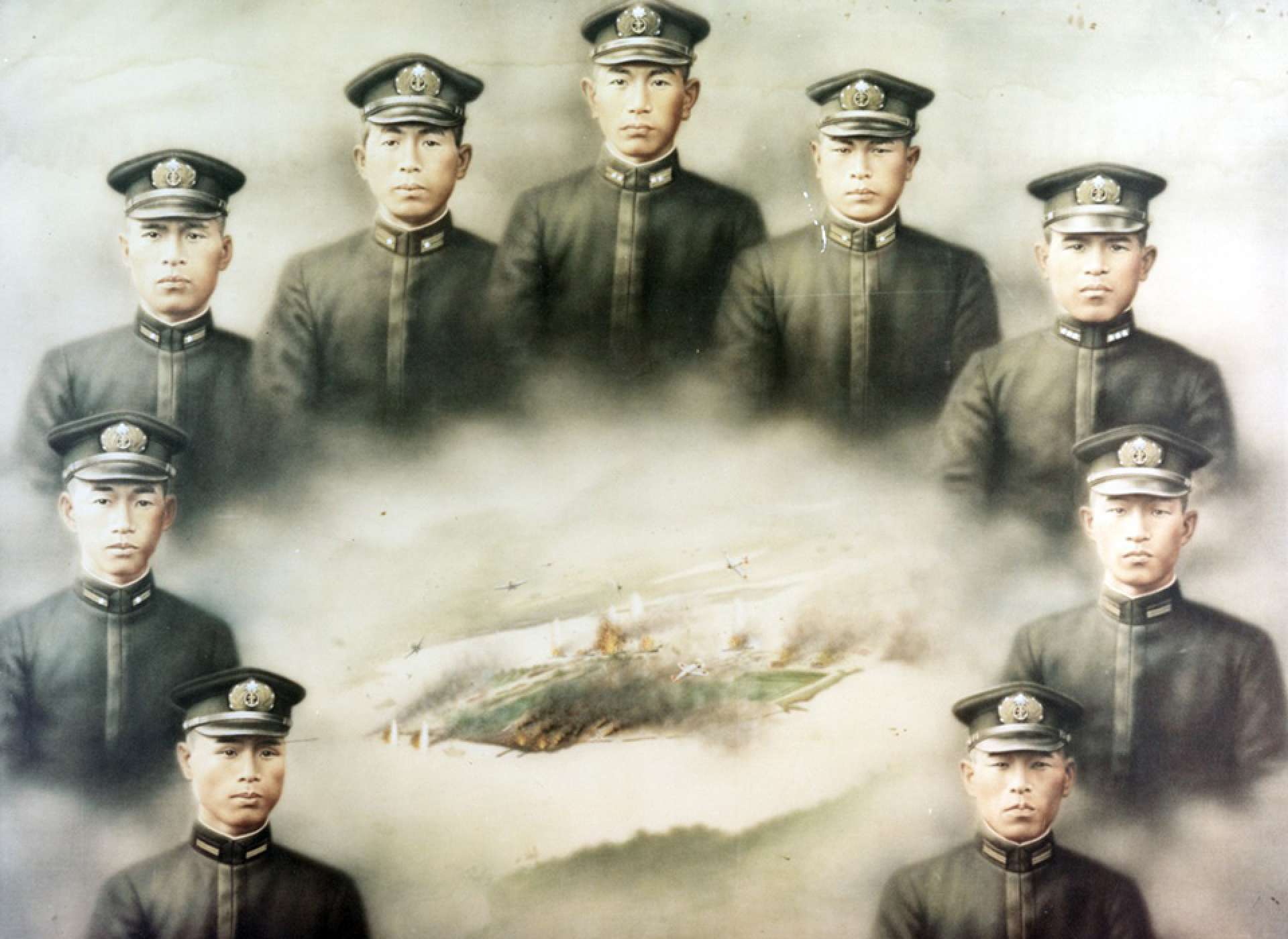
A Japanese wartime painting depicts the men lost in the midget submarine attack on Pearl Harbor. Ensign Kazuo Sakamaki, who made it to shore at Waimanalo Beach, is not shown in the piece. Courtesy of the Navy Art Collection, Washington, DC. US Naval History and Heritage Command Photograph.
Meanwhile, the men inside HA-19 were struggling. Without proper navigation, they had struck the reef outside Pearl Harbor several times. They were bumping up against the rocks and coral at the right side of the passage into the harbor when the Japanese air attack began.
Several minutes later USS Helm (DD-388) spotted the foundering vessel and fired. The shells fell close enough to knock Sakamaki unconscious as Inagaki dived the submarine away from trouble. After pulling themselves together, the pair made more attempts at entering the harbor, battering the bow of the submarine to the point the torpedoes would no longer fire. Seawater entered through the crushed nose of HA-19 and slowly began to surround the batteries, which were now emanating toxic fumes.
Giving up, the pair set out for a rendezvous point in the vicinity of Lanai. They never made it. Sometime during the voyage of the damaged craft, they were overcome by fumes and passed out. They awoke that evening, bumping on the reef near Waimanalo Beach on O’ahu’s southeast shore.
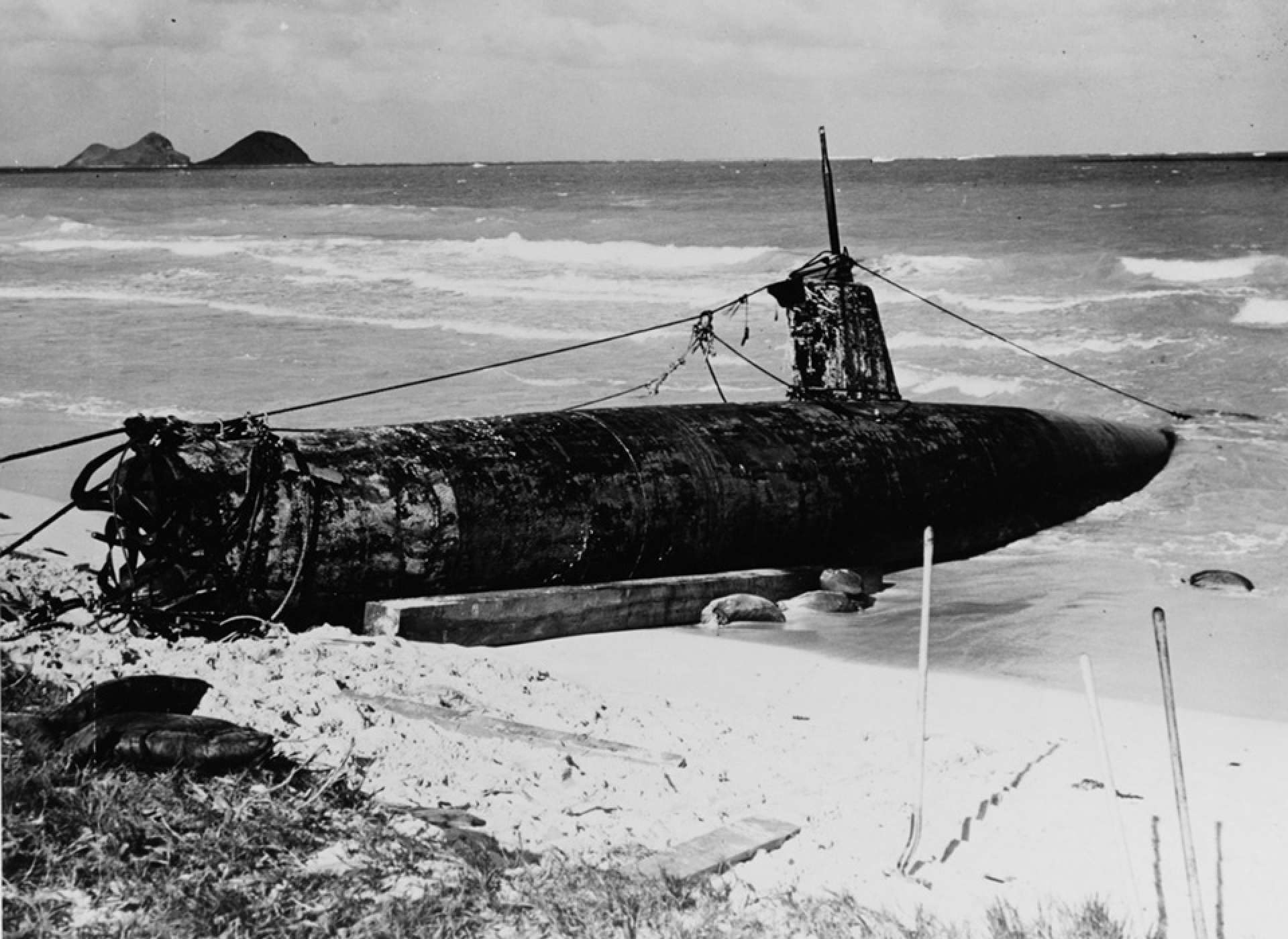
HA-19 lies partly hauled from the waves on O'ahu’s southeastern shore, showing the smashed front to the vessel, which held dual torpedo tubes. US Naval History and Heritage Command Photograph.
Inagaki drowned after attempting to set off an explosive charge to destroy the mini-sub. Sakamaki made it to shore and is often touted as Japan’s first prisoner of war. When HA-19 was spotted and bombed by American Army aircraft on December 8, the battered vessel washed ashore at the very spot we had happened upon nearly 80 years later.
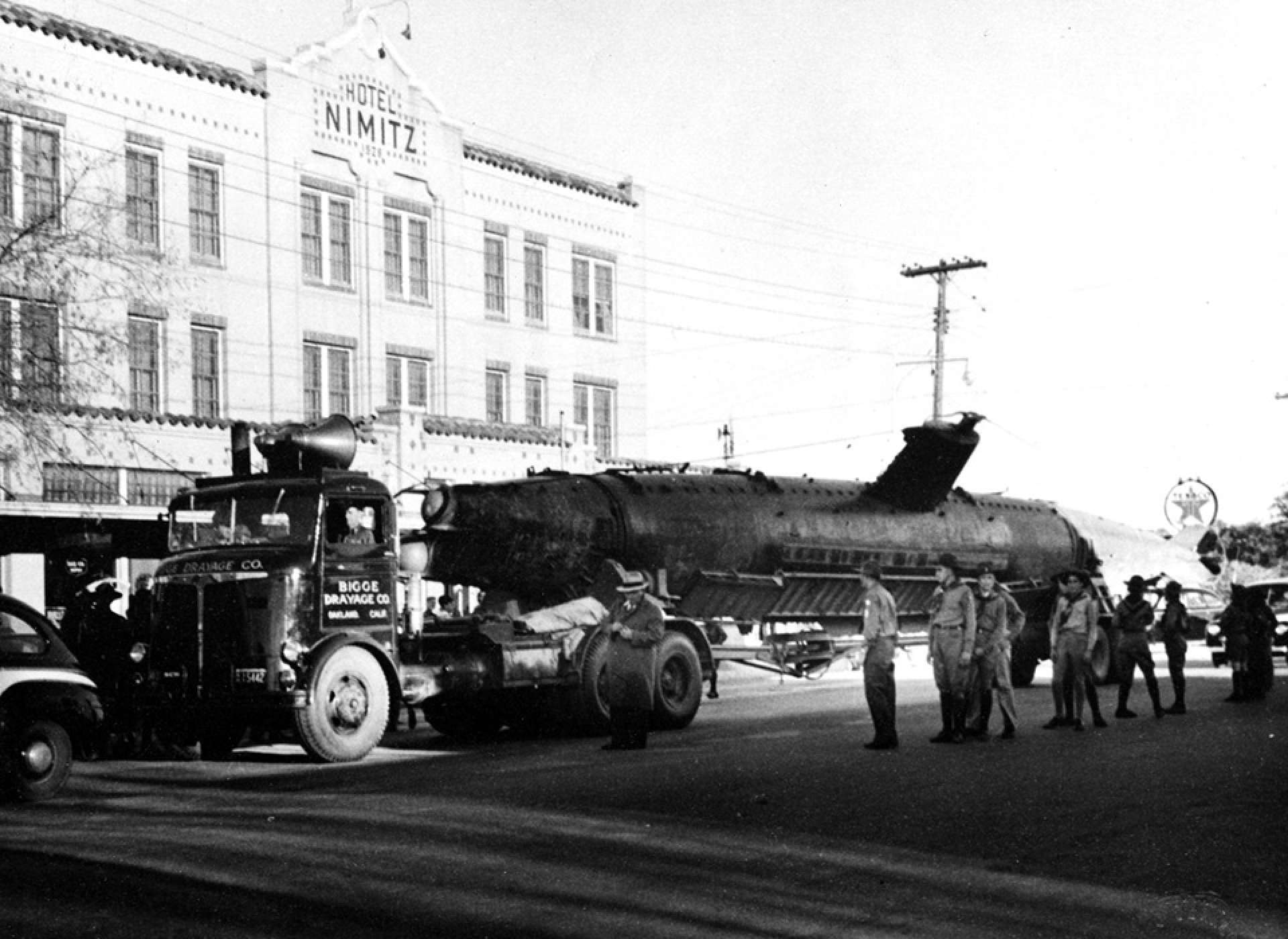
HA-19 is today on display at The National Museum of the Pacific War, but it was not the first time the vessel had been to Fredericksburg, Texas. Here the submarine passes through the city on its National War Bond tour circa 1943. US Naval History and Heritage Command Photograph.
Shipped home and loaded onto a flatbed truck, HA-19 had a life after combat. After repairs, the 78-foot long sub was shuttled around the United States as part of a war bond tour, attracting crowds who couldn’t help but come out to see the enemy’s war machine and perhaps even donate some money to America’s fight with the Axis. After 1947, the sub was displayed outside the Naval Station in Key West, Florida. In 1991, HA-19 was acquired by The National Museum of the Pacific War in Fredericksburg, Texas. That same year, on a trip to the United States, Kazuo Sakamaki visited the museum and was reunited with his combat craft from 50 years prior.
Cite this article:
MLA Citation:
APA Citation:
Chicago Style Citation:
